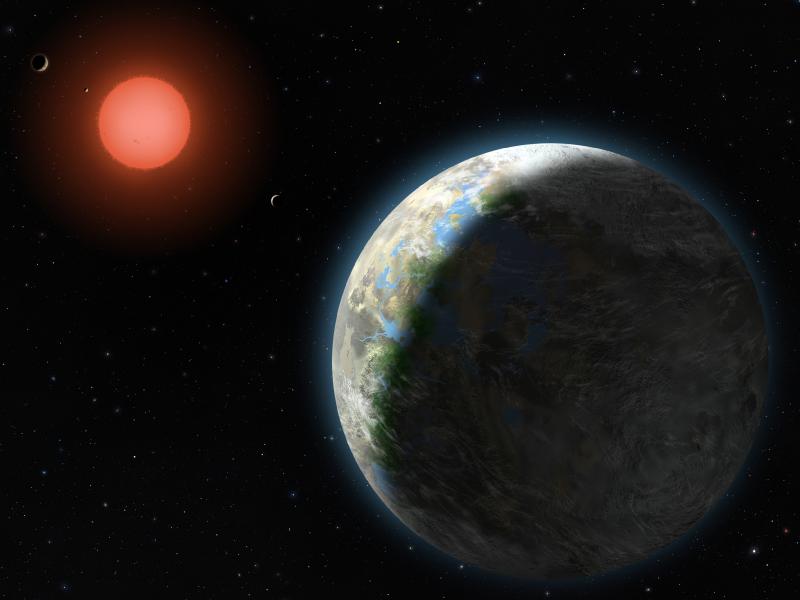In 1992 astronomers identified for the first time planetary bodies outside our Solar System. Twenty-one years later that number has grown to 1,010. Of these 1% circle their stars in what we have defined as the Goldilocks Zone, a position in space where water can exist in a liquid state. That means we have in this short period of time identified 10 potential Earth-like environments.
So for those of you who are feeling that we humans have outgrown this planet, there are alternative destinations. But wait, we are not done yet. A new NASA probe, the Transiting Exoplanet Survey Satellite, or TESS, will be launched in 2017. This new probe will replace the failing Kepler exoplanetary probe which has had its problems since the spring of this year. Unlike Kepler which has concentrated on only a segment of the sky, TESS will do all-sky surveys using an array of telescopes that will seek out exoplanets from rocky ones like ours to gas giants like Jupiter and Saturn.
Kepler, launched four years ago has discovered a potential 3,548 exoplanets from an observation field of 150,000 stars, a mere drop in the bucket for our galaxy with its estimated 100 to 400 billion. So we know that the 1,010 confirmed so far will continue to grow even with the crippling of the spacecraft as NASA scientists sort through the accumulated data. Kepler first starting exhibiting stability problems when one of its spinning reaction wheels stopped working. But NASA was able to adjust the spacecraft to compensate. When a second wheel failed, however, the problem of stabilizing the telescope worsened. With two remaining wheels the spacecraft may be repurposed to hunt for Near-Earth Asteroids. Another proposal would have Kepler seek out planets circling black holes. But its effectiveness as an exoplanet hunter, particularly small rocky ones in Goldilocks Zones, has been diminished.
In any event for those of you immediately looking for a new Earth may I recommend three planets circling Gliese 581. A mere 20 light-years from Earth, Gliese 581g (seen in an artist’s rendering below), one of the planets circling its red M-class star, is believed to be a planet containing lots of water. The planet is 5 times Earth’s mass with a diameter between 1.2 and 1.4 larger. It has a very short year circling its star every 37 days.
How long would it take to get there? Gliese 581 is 200 trillion kilometers (120 trillion miles) from our Solar System. If we can develop technology to travel at one-tenth the speed of light, to reach Gliese 581 would take 220 years. But our current technology based on chemical propulsion systems would increase that travel time astronomically. The fastest human-built space object so far was the Helios 2 probe which attained speeds of 241,400 kilometers (150,000 miles) per hour back in 1976. At that speed we would arrive at our destination in 4,470 years.










Solid foundation principles of modern science assert that the physics here on Earth in the Sol system are identical to the physics anywhere else in the cosmos. Atoms here are the same as atoms there. What are not identical there are the particular spatial arrangements of identical atoms, which might vary widely. Nothing convincing suggests that information can propagate faster than light, or that any sort of warp-drive or non-reactive thrust scheme is possible. As far as sentience is concerned, cognitive science asserts that, all “reality” is virtual and all “intelligence” is artificial. The Church Turing Thesis suggests that any actuality that can be precisely described can be precisely modeled on digital computers. It is information, not material, that gives physical bodies their qualities and defines sentient life.
So the likely many thousands of races of beings scattered about the cosmos that have interstellar interests do not travel between the stars in material form. They travel at the speed of light in the form of lowest possible mass information. The physical mass associated with such “travel” is in the form of virtually perpetual nanobotic replicators, which eventually arrive at a material destination and begin imposing structured arrangements on the material already present there. The “bodies” they construct will ultimately receive and support the minds that are stored symbolically on some extremely durable substrate.
There are no starships traveling at speeds much greater than 1% light. Even those are unlikely to be more massive than bumble bees. The Fermi Paradox resolves in the proposition that no race of sentient beings can pursue interstellar interests before it first develops very strong electronic AI. Such races will have AI technologies that easily model and create any reality. Humanity will not ever be going to the stars in physical form, but within the next several centuries it will be creating virtual worlds right here in the Sol system.
Here in the Sol system there exist inexhaustible supplies of atoms from which mankind can fabricate an infinite variety of objects. Among such objects will be great metallic space habitat wheels slowly spinning in space with millions of humans living on them. Such habitat wheels could in principle operate for millions of years on fission power and gradually move away from their solar systems of origin by using Asteroid Belt and Ort Cloud material as reaction mass. But there isn’t much point in that because any desired reality can be efficiently created virtually right here in the Sol System. Wheel ship habitats must exist somewhere in space, and for the most part it wouldn’t matter whether they are in stable Solar orbit, or traveling in swarms through interstellar space at 0.1% light speed.